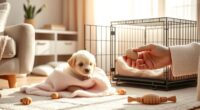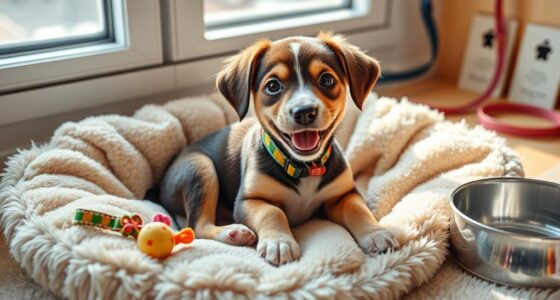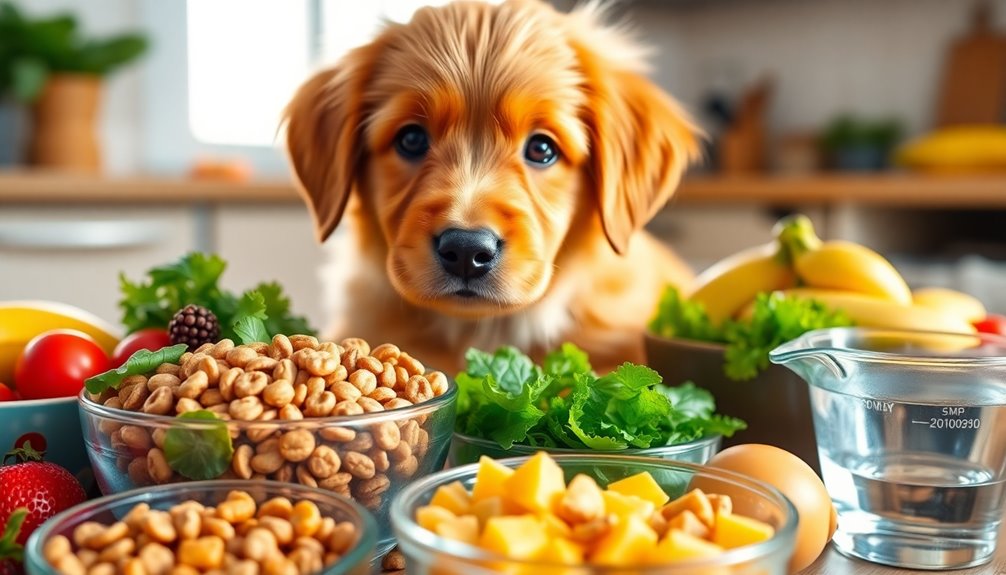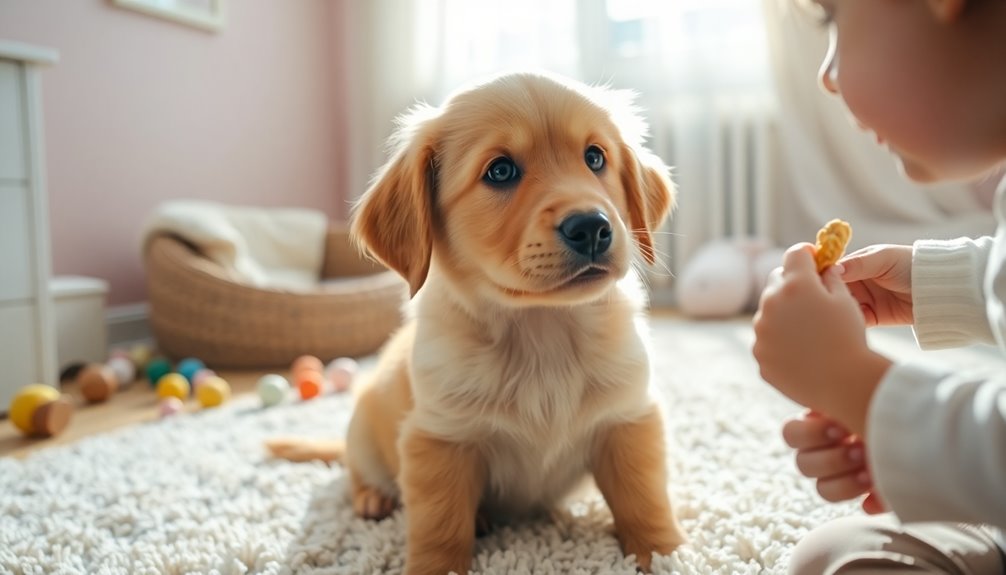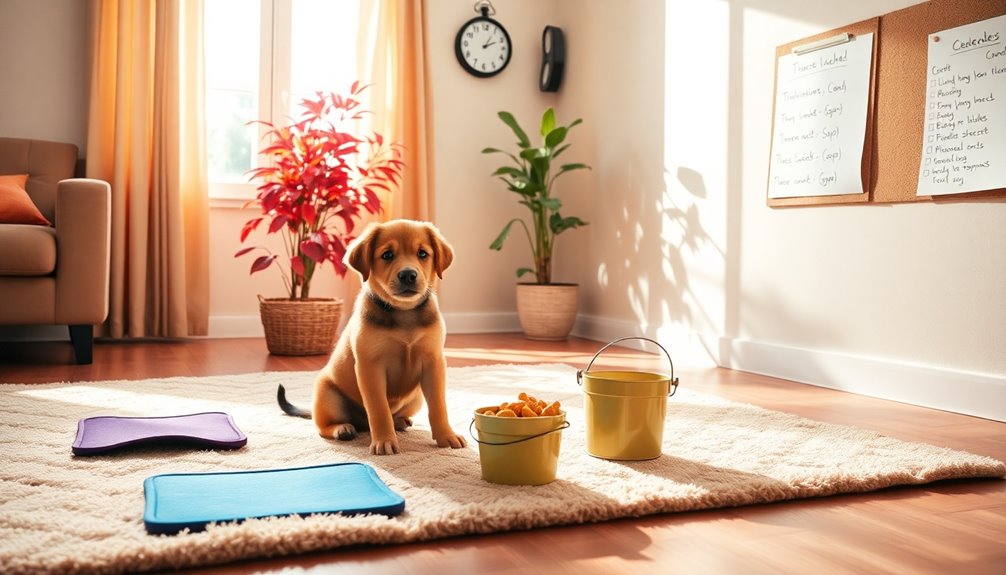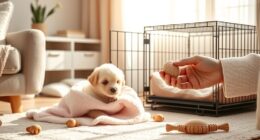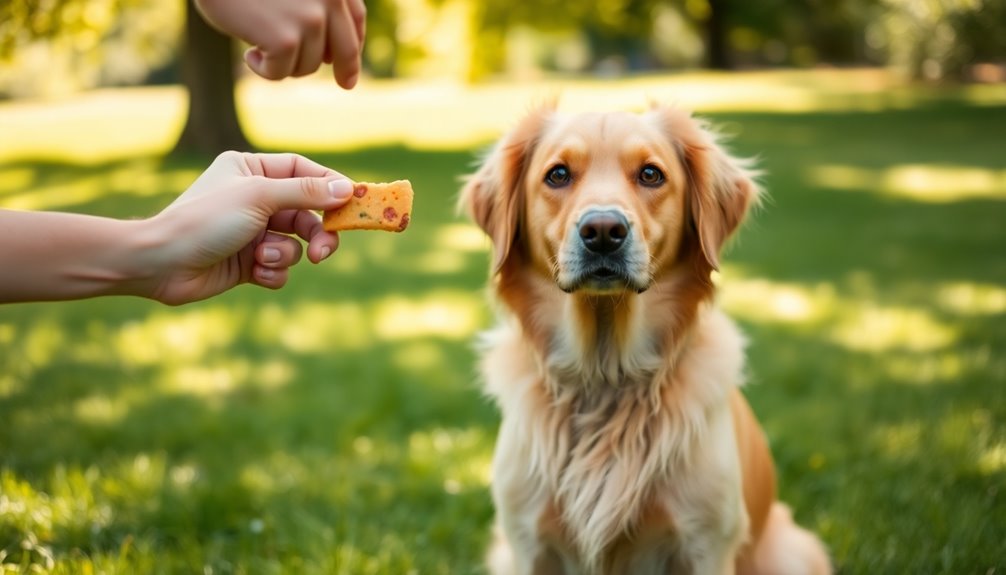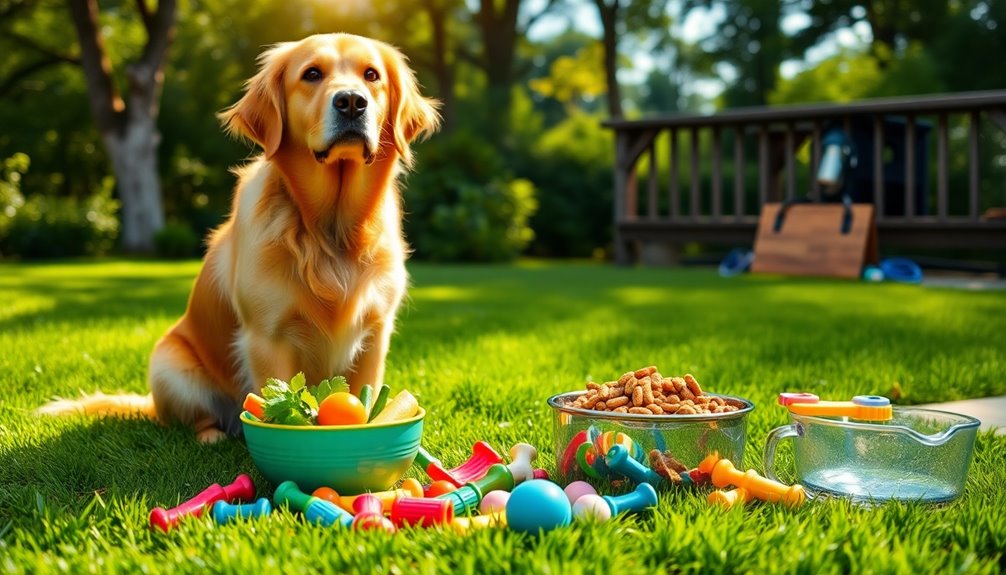To puppy-proof your home in just one weekend, start by removing small objects and securing trash cans to prevent choking or ingestion. Cover sharp furniture corners and protect electrical cords. Use baby gates to block access to risky areas like staircases or storage rooms. Check for exposed nails, loose furniture, and toxic plants, then eliminate or secure them. Regularly reassess safety and address overlooked hazards—if you want to know more, keep exploring for smarter tips.
Key Takeaways
- Conduct a thorough home inspection from your puppy’s eye level to identify hidden hazards like small objects, cords, or toxic plants.
- Secure or remove furniture with loose parts and cover sharp corners to prevent injuries during active play.
- Use baby gates and door barriers to restrict access to hazardous areas such as kitchens, basements, or rooms with chemicals.
- Tuck away electrical cords and secure fragile or toxic household items out of your puppy’s reach.
- Regularly reassess your environment and implement safety routines to adapt to your puppy’s growing curiosity and mobility.
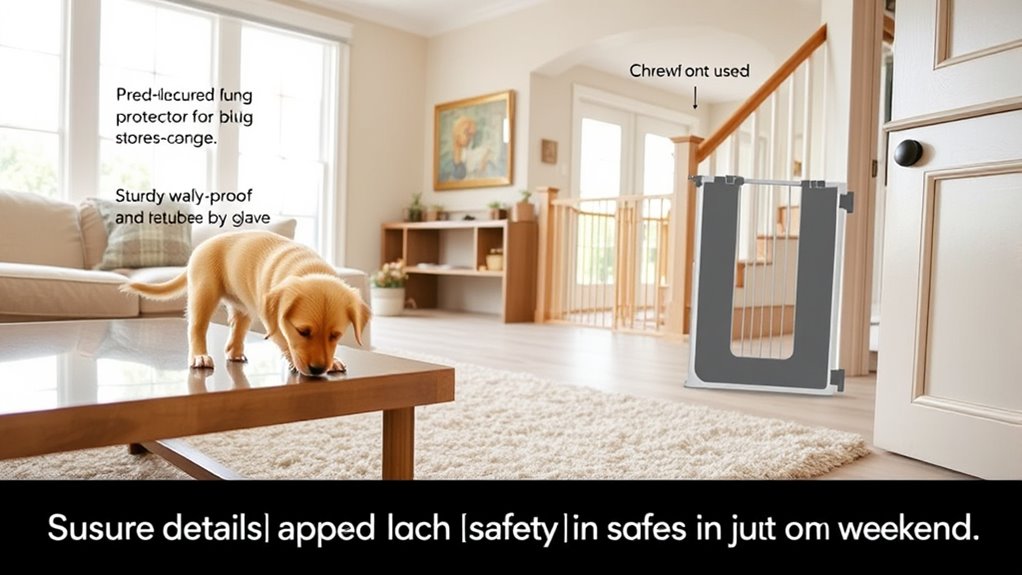
Bringing a new puppy into your home is exciting, but it also means taking steps to keep your curious pup safe. Puppies are naturally inquisitive, and their playful nature can quickly lead them into trouble if your house isn’t properly puppy-proofed. One of your first priorities should be identifying household hazards that could harm your new furry friend. Small objects like rubber bands, coins, and electrical cords are tempting for puppies to chew or swallow, so removing them from reach is essential. Additionally, secure trash cans with lids or place them in cabinets to prevent your pup from rummaging through garbage, which can contain harmful substances or choking hazards.
Puppy-proof your home by removing small objects and securing trash cans to keep your curious pup safe.
Furniture safety is another essential aspect of puppy-proofing. Puppies love to explore by jumping on and chewing furniture, but some items might be unsafe if they’re fragile or contain toxic materials. Cover sharp corners of tables and countertops with corner protectors to prevent injuries during playful tumbles. If you have furniture with loose or exposed nails, screws, or staples, fix or remove them promptly. Keep electrical wires tucked away or protected with cord covers so your puppy won’t chew on them, risking electrical shock. Be mindful of plants or decorations on tables; many are toxic to dogs, so move any potentially dangerous items out of reach. Blocking access to areas with cords, sharp edges, or fragile furniture helps reduce accidents and damage.
Creating a secure environment also involves puppy-proofing your home’s entrances and exits. Use baby gates to restrict access to rooms that aren’t puppy-proofed yet or that contain hazards like cleaning supplies or heavy objects. This prevents your puppy from wandering into unsafe areas when you’re not looking. Make sure to secure cabinets and drawers that contain cleaning products, medications, or other dangerous items. Keep doors to the garage, basement, or laundry room closed, as these spaces often contain hazards like chemicals, tools, or appliances.
Additionally, consider professional guidance or safety resources to ensure you haven’t overlooked potential risks. Check your home from your puppy’s eye level to spot anything that might be overlooked. Look for small objects that could be swallowed, cords that could be chewed, or areas where your pup could get stuck. By systematically addressing household hazards and ensuring furniture safety, you create a safer environment for your puppy to explore and grow. With some planning and quick action over a weekend, you’ll markedly reduce risks and give your new puppy a safe, welcoming space to settle into.
Frequently Asked Questions
How Can I Puppy-Proof My Yard Effectively?
To puppy-proof your yard effectively, start by inspecting your garden fencing, making sure it’s secure and tall enough to prevent escapes. Remove outdoor hazards like sharp tools, toxic plants, or small objects your pup could swallow. Block off any gaps or holes in fences, and consider adding a designated play area with safe, puppy-friendly toys. Regularly check for new hazards to keep your furry friend safe and happy outdoors.
What Household Plants Are Toxic to Puppies?
Imagine your home as a garden of safety, but beware of poisonous plants lurking within. Some household plants are toxic to puppies, risking serious health issues if ingested. To guarantee plant safety, avoid plants like lilies, aloe vera, and pothos. Always research and identify potential hazards, and keep these poisonous plants out of your puppy’s reach. Protect your furry friend by making your home a safe, plant-friendly environment.
How Do I Puppy-Proof Furniture and Décor?
When puppy-proofing furniture and décor, you want to guarantee decor safety by removing or securing items that could be chewed or knocked over. Use corner protectors, furniture anchors, and baby gates to prevent accidents. Cover sharp edges, hide cords, and choose durable, puppy-friendly fabrics. Regularly supervise your pup around furniture, and create designated safe zones. These steps help keep your home secure and your pup happy, without risking damage or injury.
Are There Affordable Puppy-Proofing Solutions?
Did you know that pet-related damages cost owners over $1 billion annually? For affordable puppy-proofing, you can try cost-effective methods like using inexpensive baby gates, securing cords with DIY solutions, and repurposing household items. DIY puppy proofing is often budget-friendly and effective, helping protect your home without breaking the bank. With a little effort, you can create a safe space for your puppy using simple, inexpensive solutions.
How to Puppy-Proof Electrical Cords Safely?
To puppy-proof electrical cords safely, start by using cord cover solutions to protect your puppy from chewing and electrical hazards. You can also wrap exposed cords with electrical tape options, ensuring they’re tightly secured and out of reach. Keep cords organized and tucked away behind furniture whenever possible. These simple steps help prevent accidents, keeping your puppy safe while maintaining a tidy home.
Conclusion
By taking these simple steps, you’ll create a safe, puppy-proof home in just a weekend. Remember, your puppy’s curiosity is endless, and a little preparation goes a long way. Are you ready to turn your space into a haven where your new furry friend can explore safely? With a bit of effort now, you’ll enjoy worry-free snuggles and playtime, knowing you’ve done everything to protect your puppy and keep your home happy and secure.


